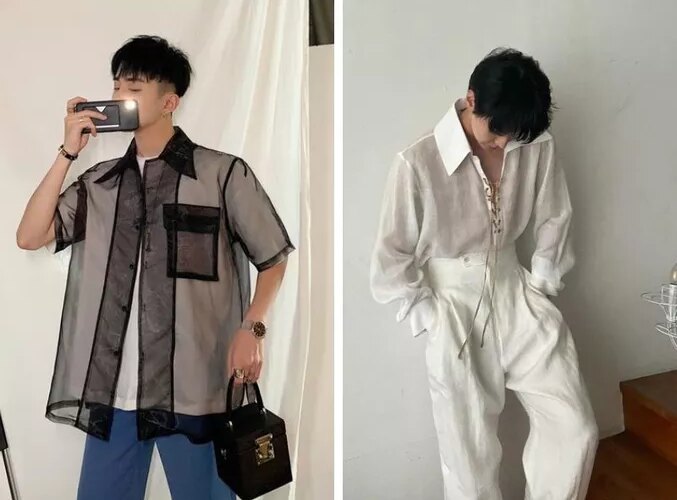When people think of chiffon or spongy chiffon, they envision a light, airy and charming material. Chiffon fabric is widely used for decoration and clothing, but do you really know what it is? Discover the advantages, disadvantages, and applications of chiffon fabric in daily life with Fashion Bandung.
What is the origin of chiffon fabric and what is chiffon fabric made of?
Chiffon fabric is a versatile and delicate material that has been utilized in interior decoration and fashion for a considerable period of time. It is highly favored for its lightweight and sheer qualities, which lend an elegant and ethereal touch to any design or garment.
Chiffon fabric originated from a combination of silk and cotton fibers, making it both luxurious and breathable. This unique blend allows for excellent draping and flow, creating a graceful and flattering silhouette when used in clothing. Its sheer nature adds a hint of sensuality, making it a popular choice for evening wear, wedding dresses, and lingerie.
Additionally, chiffon fabric’s popularity stems from its ability to be dyed in a wide array of vibrant colors, making it perfect for creating eye-catching designs. The fabric also possesses a subtle shine that adds a touch of elegance to any ensemble.
In interior decoration, chiffon fabric is often utilized for window treatments, such as curtains and drapes. Its lightweight quality allows for gentle movements and filtering of natural light, creating a soft and romantic ambiance in any room. It can also be used to accent furniture pieces or create delicate decorative items, adding a touch of sophistication to any space.
Overall, chiffon fabric’s long-standing popularity can be attributed to its versatility, delicacy, and luxurious qualities. It remains a go-to choice for those seeking a soft, ethereal, and elegant aesthetic in both fashion and interior design.
What is voile fabric?
Voile fabric, derived from the French term “voile” meaning “cover,” is a lightweight and breathable fabric made from a blend of cotton and polyester, cotton and linen, or pure cotton. It has a smoother texture compared to regular cotton fabrics, providing an exceptional level of comfort. Due to its lightness and breathability, voile fabric allows air to pass through easily, making it perfect for warm climates. Additionally, one unique characteristic of voile fabric is its transparency, allowing it to be seen through. Overall, voile fabric offers a luxurious and comfortable option for various clothing and home decor applications.
Chiffon, due to its low fabric density, is known for being sheer and lightweight. These qualities make it an ideal choice for summer outfits, as it allows air to flow through easily and offers a comfortable and cool feeling to the wearer.
What is chiffon? Chiffon is a type of fabric that is known for its high quality and light, foam-like texture. It is commonly used to sew flared skirts as it adds volume and creates a flowing and elegant look. Chiffon is also used in making corsages, as its delicate and sheer nature adds a romantic touch to the accessory. In the fashion industry, chiffon fabric is widely used due to its versatility and affordability. It offers a fairly low price point, making it accessible to a wide range of customers who are looking for fashionable and affordable clothing options.

Chiffon fabric is a lightweight and sheer fabric that is highly adored and widely utilized by numerous individuals. It originates from a combination of silk, cotton, or synthetic fibers, and is known for its delicate and flowing characteristics. Chiffon fabric is believed to have originated in France during the 18th century, and its name is derived from the French word “chiffe,” which means rag or cloth.
The popularity of chiffon fabric stems from its versatility and aesthetic appeal. Its light and airy texture makes it an ideal choice for creating elegant and graceful clothing items such as dresses, blouses, and scarves. Chiffon’s sheer quality adds a touch of sophistication and femininity to any outfit. Additionally, chiffon’s draping ability allows it to create beautiful, flowing silhouettes, which flatter a wide range of body types.
Moreover, chiffon fabric’s popularity is also due to its comfort and breathability. Its loose weave allows air to flow through, making it a suitable material for warm weather conditions. Chiffon is also known for its wrinkle-resistant nature, making it a preferred choice for garments that require minimal maintenance and are easy to pack for travel.
Furthermore, chiffon is favored by many designers and fashion enthusiasts due to its wide range of colors and patterns available. This fabric can be dyed easily, enabling the creation of vibrant and eye-catching designs. Whether adorned with intricate prints, delicate florals, or bold hues, chiffon fabric offers limitless possibilities for expressing one’s personal style.
Overall, chiffon fabric’s appeal can be attributed to its luxurious yet lightweight nature, versatility, breathability, and aesthetic appeal. It is a fabric cherished by individuals across various cultures and used in a multitude of stylish and comfortable clothing options.
Origin of chiffon fabric
Chiffon, a fabric with a long history, is thought to have originated in Asia during the 8th century in China. Over time, its popularity has spread to various countries including China, Egypt, India, and the Mediterranean. It has become widely utilized for sewing and making clothing and costumes, earning its reputation as one of the most significant fabrics in world history.
In today’s modern world, chiffon fabric continues to be widely utilized across different aspects of life. It is produced in numerous countries globally, including India, China, Japan, Korea, Thailand, and many more. Each country has its own unique production methods and techniques, resulting in chiffon fabrics with distinct characteristics and purposes. These variations in production contribute to the diverse range of chiffon fabrics available in the market, each tailored for specific uses and applications.
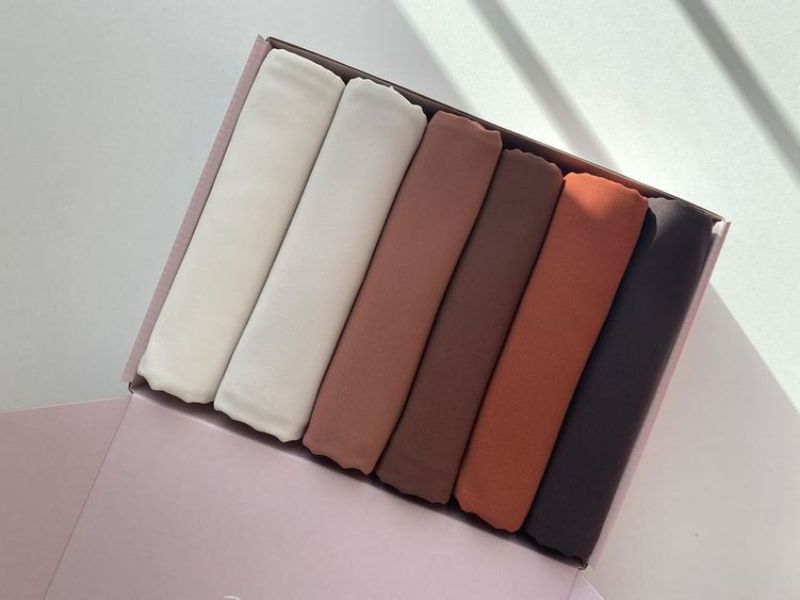
Chiffon fabric has a rich history that dates back many years. Its origins can be traced to a time long ago.
Key traits of chiffon fabric include its lightweight, sheer nature, soft texture, and elegant draping quality.
Chiffon fabric is a type of fabric that is widely used in the fashion industry due to its numerous advantages over other fabrics. It is important to understand what exactly chiffon fabric is and the various characteristics that make it desirable. Here are five key points to explain what chiffon fabric is.
Advantages of chiffon fabric
Chiffon, a fabric that has been used since ancient times, has gained widespread popularity in daily life. Designers have developed a deep fondness for chiffon as it allows them to unleash their creativity and create unique designs. Its special characteristics set it apart from other fabrics and contribute to its popularity. So, what makes chiffon so well-liked?
- Extremely comfortable to wear: The outstanding feature is high drape, chiffon designs are mainly straight, so chiffon designs always give the wearer an extremely comfortable, pleasant feeling, not tight.
- No wrinkles: Even when used for a long time, this fabric does not wrinkle or crumble, so chiffon fabric was born to help you overcome this disadvantage, saving a lot of time in ironing clothes.
- Cool, good ventilation: With its fragile properties, chiffon fabric always gives the wearer a certain coolness, very suitable and popular for summer clothing designs.
- Light, quick drying: When wearing clothes made from chiffon, the wearer always feels extremely comfortable because this fabric is very light, thin and extremely comfortable, and dries very quickly when washed.
- Highlighting the soft beauty of the wearer: is an extremely soft, light and highly flowing fabric, chiffon outfits can easily enhance the beauty of the wearer, helping the wearer look gentler and more attractive. Besides costumes, chiffon is also used to design accompanying patterned accessories to make your outfit more elegant and luxurious.
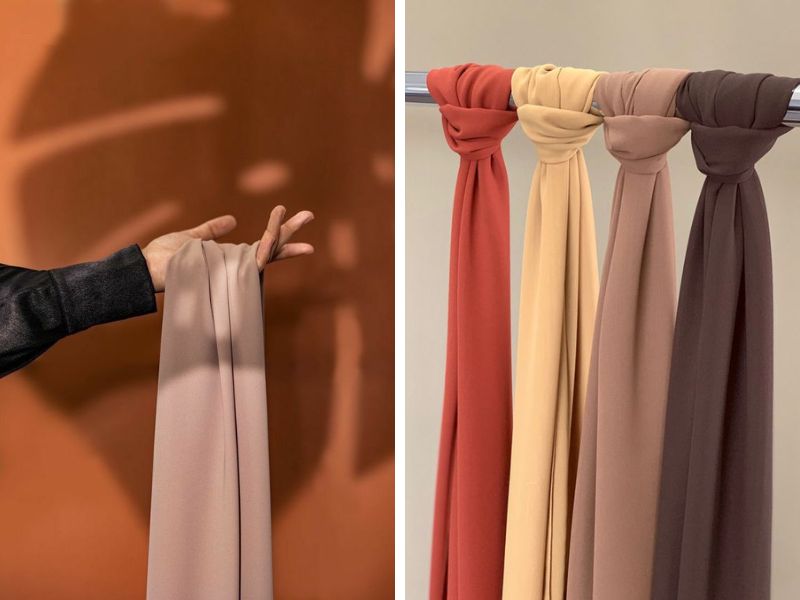
What are the specific advantages of chiffon fabric that make it highly popular and preferred by a wide range of individuals?
Drawbacks of chiffon fabric include its delicate nature, tendency to snag, and the need for careful handling and maintenance.
With its lightweight and delicate nature, chiffon fabric does come with certain drawbacks. Now, let’s delve into the disadvantages of this fabric.
- Too thin, flammable: Thin is both the advantage and disadvantage of chiffon fabric. Because it is thin, chiffon fabric is easily see-through, so it is necessary to use additional layers of clothing inside to avoid causing offense. Not only that, chiffon fabric is also flammable, so the wearer must be extremely careful when using it and is not suitable for children’s clothing.
- Poor elasticity: Because it is made from synthetic materials, chiffon fabric has poor elasticity and is not suitable for designing tight-fitting outfits. If used for large-sized outfits, it will often look baggy and sloppy.
- Difficult to sew, easy to get dirty: What is chiffon fabric that is difficult to sew? It is a fabric woven with quite sparse threads, making chiffon extremely difficult to sew and difficult to repair. Besides, if you accidentally get it dirty, you need to clean it quickly because this type of fabric is very difficult to clean if the stain is deeply embedded.
- Difficulty in design and styling: When sewing, chiffon fabric is very easy to be cut crooked or cut wrong because chiffon fabric is very smooth and thin. Not only that, chiffon fabric is also easy to fray because it is too thin, so when designing clothes with chiffon fabric, the craftsman must be extremely meticulous and careful in every step.
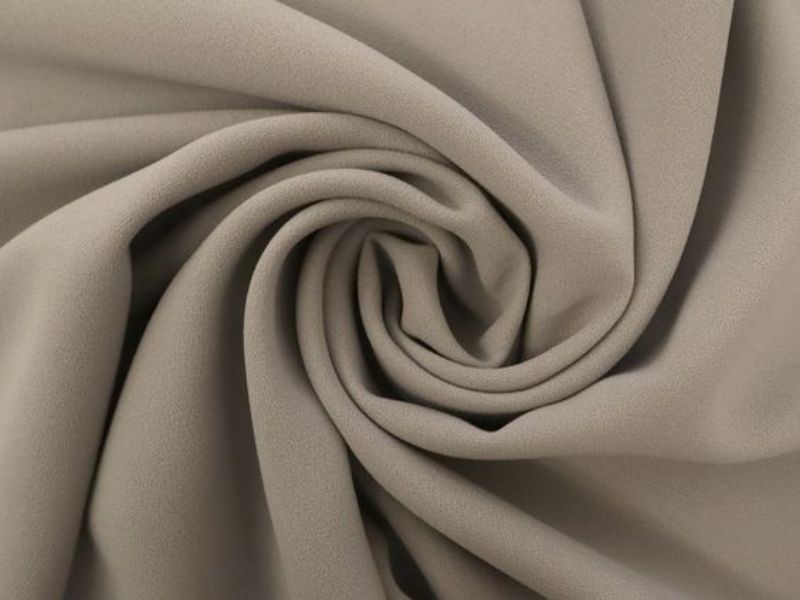
Despite being known for its lightness and delicacy, chiffon fabric does come with a few drawbacks.
Chiffon fabric can be used for clothing, draperies, bridal veils, scarves, and other lightweight, flowing garments.
Chiffon fabric is a versatile material that is highly regarded and widely used in various aspects of daily life. It is not only a popular choice in the fashion industry but also finds application in interior decoration and the production of handicrafts. This lightweight and sheer fabric has become an essential item for everyone due to its aesthetic appeal and practical uses. Whether it is used to create elegant dresses, stylish curtains, or delicate art pieces, chiffon fabric has gained popularity for its versatility and versatility in different fields.
In fashion, clothing
Chiffon fabric is frequently used in everyday outfits, particularly in the summer season. This type of fabric is highly favored by fashion enthusiasts due to its thin, lightweight, and breezy qualities. It is an essential fabric that no fashionista can overlook. Moreover, chiffon is also ideal for creating various accessories like ribbons, scarves, and more.
Chiffon fabric holds a special place in the world of bridal fashion. Its ethereal beauty and delicate texture make it the top choice for creating stunning bridal dresses. The irresistible charm of chiffon gowns is hard for any bride to resist. Chiffon is also often used to fashion headscarves, adding a touch of elegance and grace to any outfit. Its lightweight and airy nature allow for the creation of puffy and ruffled styles, accentuating femininity and lending prominence to the overall look.
Chiffon fabric is a lightweight and sheer material that is often used in the creation of flowing and airy garments. However, it is not suitable for tight-fitting clothing. This is because chiffon fabric has a high drape, meaning that it tends to fall in a straight shape rather than conforming to the body’s curves. Therefore, if you are looking for clothing that hugs your figure, chiffon may not be the best choice for you.
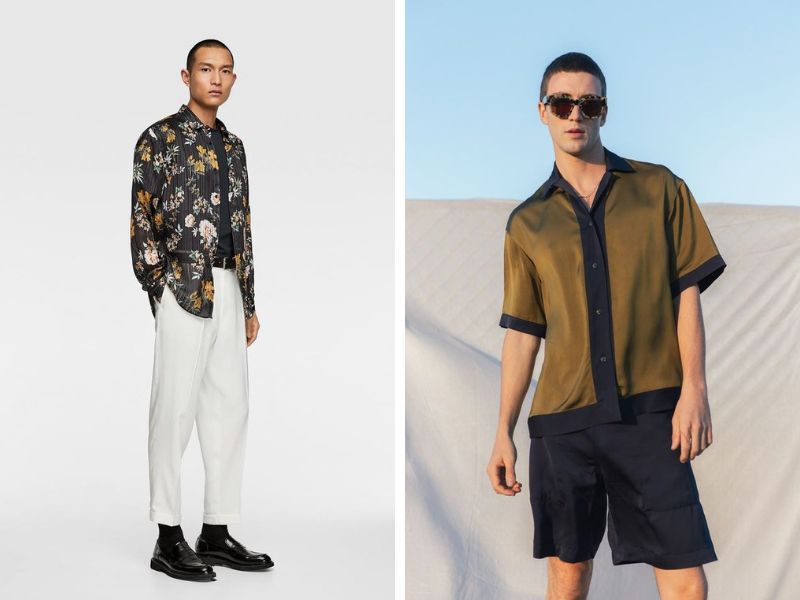
Chiffon fabric, a material commonly found in everyday life, holds various fashion applications that have gained significant popularity. With its lightweight and sheer texture, chiffon is a preferred choice for creating elegant and flowy garments. This fabric is often used in designing dresses, blouses, skirts, and scarves, lending a delicate and feminine touch to the wearer’s attire. Its versatility allows chiffon to be incorporated into both casual and formal clothing, making it suitable for a wide range of occasions. Moreover, the fabric’s translucency can be utilized creatively to add layers and dimension to ensembles, giving them a graceful and ethereal appearance. Overall, chiffon fabric is highly sought after in the fashion industry for its aesthetic appeal and its ability to enhance any outfit with its unique characteristics.
In interior decoration
Chiffon fabric finds its application not only in the fashion industry but also extensively in interior decoration. It is widely used for creating elegant curtains, embellishing decorative flowers, and crafting various handicraft items.
Voile fabric is an excellent option for room decor as it adds an airy and serene atmosphere. Additionally, adorning the room with voile curtains will elevate the overall aesthetic, imparting a magnificent, opulent, and elegant charm to the space.
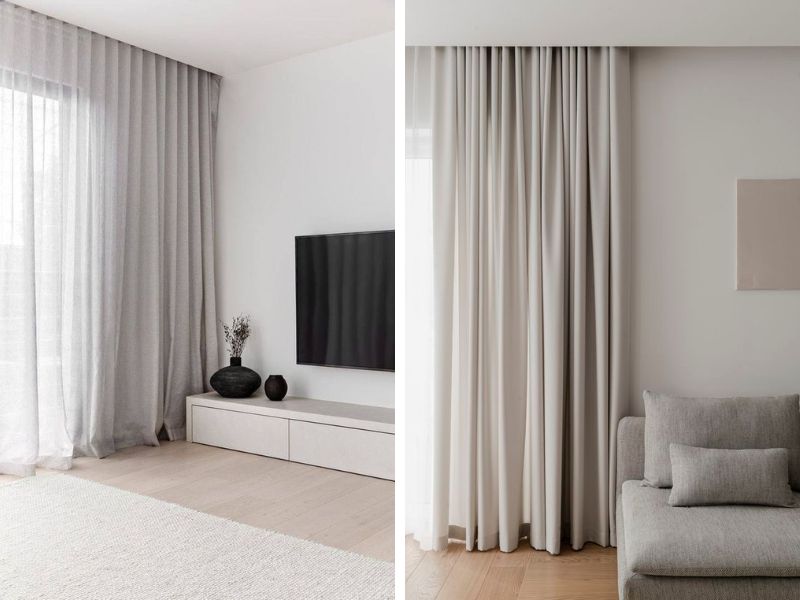
Voile fabric is a highly versatile material that finds extensive applications in interior decoration. It is commonly used to make curtains, tablecloths, and other decorative textiles. Voile fabric’s lightweight and sheer nature make it an ideal choice for adding an elegant and airy touch to any room. Whether it’s draping softly to create flowing curtains or adorning tables with delicate tablecloths, voile fabric adds a touch of sophistication and refinement to interior spaces. Its availability in various colors, patterns, and textures allows for endless possibilities in creating beautiful and personalized interior designs.
What are some important considerations when working with chiffon fabric?
Chiffon fabric is a popular choice for many people due to its versatility and comfort. It is commonly used in various daily life applications such as clothing and home decor. To ensure that chiffon fabric remains in good condition and lasts longer, there are a few important points to consider.
Firstly, it is crucial to handle chiffon fabric with care. Being a delicate fabric, it is prone to snagging and tearing. It is recommended to gently wash chiffon items by hand using a mild detergent, or if using a washing machine, using the delicate cycle and placing the items in a mesh laundry bag. Avoid wringing or twisting the fabric as it can cause damage.
Secondly, it is advisable to air dry chiffon fabric instead of using a dryer. High heat can weaken the fabric fibers and lead to shrinkage or distortion. Hang or lay the fabric flat in a well-ventilated area away from direct sunlight.
Furthermore, when storing chiffon fabric items, it is important to fold them neatly and avoid hanging them for a long period of time. Hanging can cause stretching and deformation. It is also recommended to store chiffon items in a cool, dry place to prevent moisture damage.
Additionally, be cautious when wearing or using chiffon fabric in situations where it may come into contact with rough surfaces or sharp objects. These can cause snags or tears. It is advisable to avoid wearing sharp jewelry or accessories that may catch on the fabric.
Lastly, regular maintenance is essential to keep chiffon fabric in optimal condition. Gentle steaming with a garment steamer or ironing at a low temperature can help remove wrinkles and restore its original appearance. However, always check the care instructions and test a small, inconspicuous area before applying heat to the entire fabric.
By following these guidelines, chiffon fabric can be preserved and maintained effectively, ensuring its longevity and achieving the best results in terms of comfort and aesthetics.
- Do not soak chiffon clothes in water before washing.
- Wash by hand, do not wash chiffon clothes in the washing machine because chiffon fabric can easily get caught in details such as buttons and zippers, causing the fabric to be damaged or torn.
- Use shampoo or shower gel to wash chiffon to avoid fading the fabric.
- Limit the use of iron hangers to avoid tearing or damaging the chiffon fabric. Use wooden hangers or fabric covers to keep the chiffon fabric most durable.
- Do not dry chiffon fabric directly under sunlight.
- Voile clothes should be stored in a dry place, avoid damp places. Should be used regularly to keep clothes from being damaged.
- When sewing, use a fabric clip between two sheets of paper to secure the fabric, preventing damage or tearing.
- Do not iron chiffon clothes at high temperatures as this will cause the fabric to shrink and wrinkle.
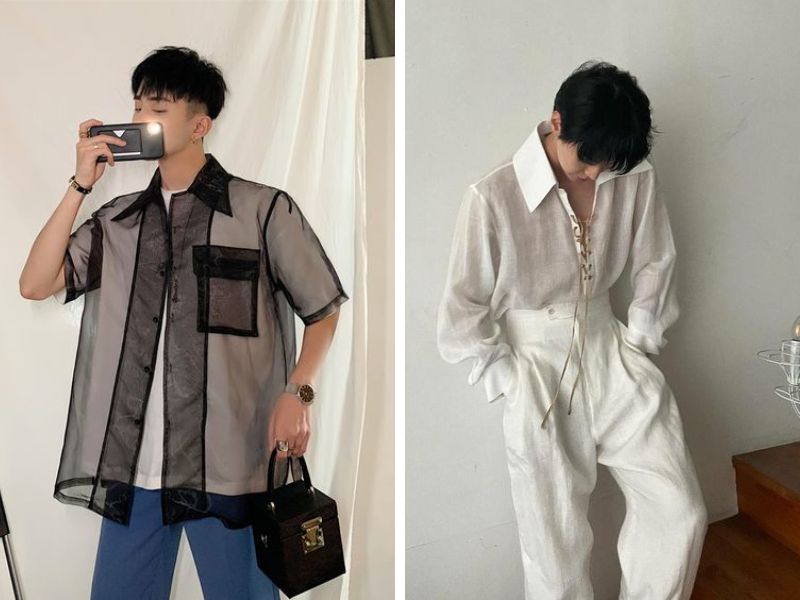
To ensure the longevity and durability of chiffon fabric, it is essential to implement proper preservation and maintenance techniques. By following these guidelines, you can keep your chiffon products in optimal condition:
1. Gentle Washing: Chiffon fabric is delicate and requires gentle handling during the washing process. It is advisable to wash chiffon by hand using a mild detergent specifically formulated for delicate fabrics. Avoid using any harsh chemicals or bleach that could damage the fabric fibers.
2. Cold Water: When washing chiffon, always use cold water. Hot water can cause the fabric to shrink or lose its shape. Additionally, avoid excessive agitation or rubbing while washing to prevent snagging or tearing the delicate fabric.
3. Drying Methods: After washing, avoid using a dryer to dry chiffon fabric. Instead, carefully squeeze out excess water without wringing or twisting the fabric. Then, lay the chiffon flat on a clean, absorbent towel and gently roll it up to remove remaining moisture. Finally, leave the chiffon product to air dry in a well-ventilated area away from direct sunlight.
4. Ironing on Low Heat: To remove wrinkles or creases, iron chiffon fabric on a low heat setting. It is crucial to use a pressing cloth or a layer of clean cotton fabric between the iron and the chiffon to prevent direct contact. Ironing at high temperatures can cause scorch marks or even melt the fabric.
5. Proper Storage: When not in use, chiffon products should be stored properly to protect them from damage. Always store chiffon items in a cool, dry place away from direct sunlight, as prolonged exposure to sunlight can cause the fabric to fade. Furthermore, ensure that there are no sharp objects or rough surfaces that could snag or tear the delicate fabric.
6. Avoiding Chemicals: Keep chiffon fabric away from contact with perfumes, cosmetics, or any harsh chemicals as they can stain or cause discoloration. If necessary, apply any beauty or skincare products before putting on chiffon garments.
By following these preservation and maintenance techniques, you can extend the lifespan of your chiffon products and keep them looking beautiful for years to come.
Commonly asked questions about voile fabric.
In addition to the concerns that Fashion Bandung mentioned earlier, whenever the topic of chiffon fabric is brought up, numerous questions arise. People often inquire about various aspects of chiffon, such as its composition, characteristics, and uses.
- Does chiffon fade easily? Although it has high color fastness and is very difficult to fade, chiffon fabric is made of quite loosely woven fibers, so it is easy for the color to stick when washed with other items. To keep the product color best, you should separate chiffon products from other products to avoid color adhesion and keep the product more durable.
- Is chiffon expensive and where to buy chiffon? Depending on the material and thickness, weave or origin of each type of fabric, the price of chiffon fabric can be different. Most chiffon fabrics will cost more than other types of fabrics because chiffon is made from natural fibers and has a more sophisticated production process. You can easily find chiffon fabric and chiffon items at stores or e-commerce sites.
- Is chiffon fabric easy to tear? You can rest assured to use products made from this fabric. Although the fabric density is low, this fabric is very durable, difficult to tear, and if carefully preserved, it can completely keep the product intact over the years..
In the above article, Fashion Bandung has provided a comprehensive review of chiffon and foam chiffon fabrics. The article aims to enhance your understanding of these fabrics by discussing their characteristics, advantages, disadvantages, and applications in daily life. By gaining this knowledge, it is hoped that you will be able to make informed decisions when using and preserving these fabrics in your daily life.
Please remember to follow the pages associated with Fashion Bandung News for more detailed information about fashion, fashion knowledge, and the latest fashion styles.
Welcome to Fashion Bandung, the ultimate destination for men’s fashion. We pride ourselves in offering a wide range of stylish clothing and accessories that will make you look and feel your best. Whether you’re looking for casual attire, formal wear, or something in between, we have you covered. Our collection features the latest trends and designs, carefully curated to ensure that you can express your personal style with confidence. With Fashion Bandung, it’s never been easier to elevate your fashion game and stand out from the crowd. Browse our extensive selection today and discover the perfect ensemble for any occasion.
See more:

